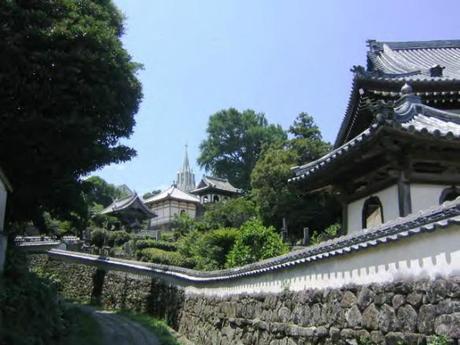

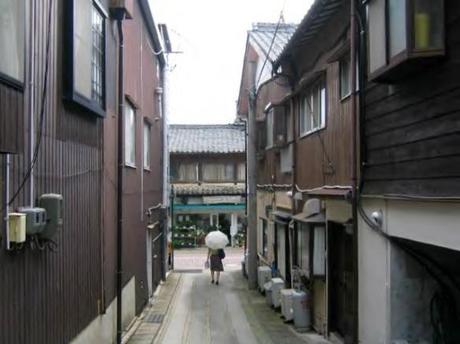
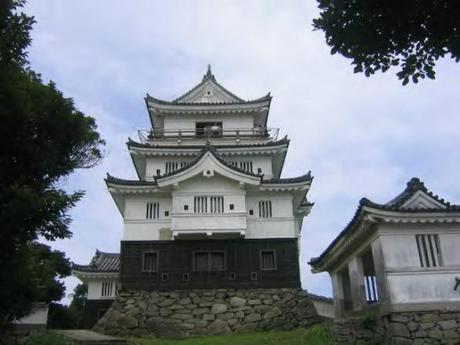
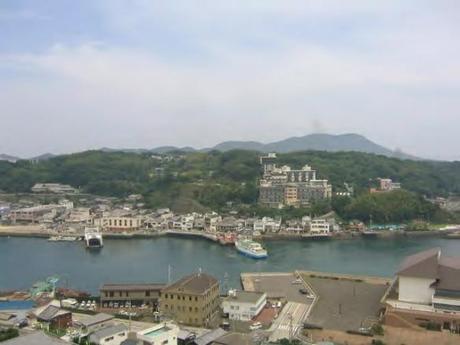
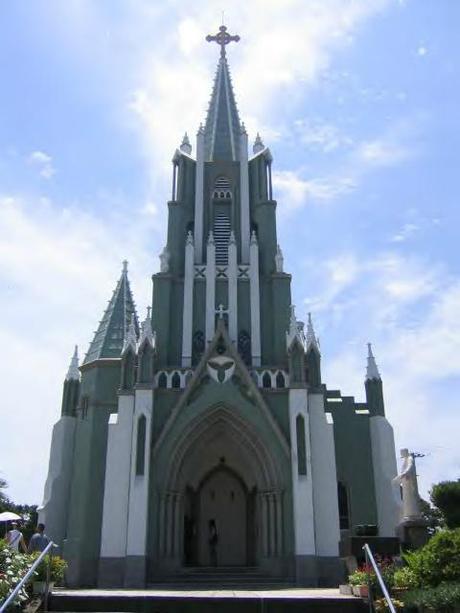
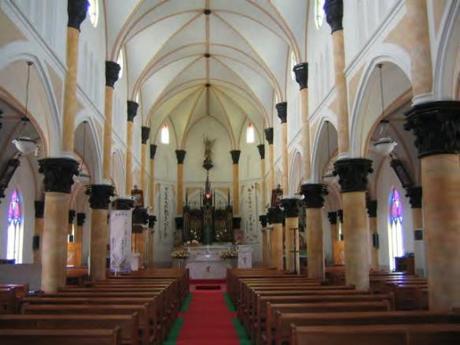

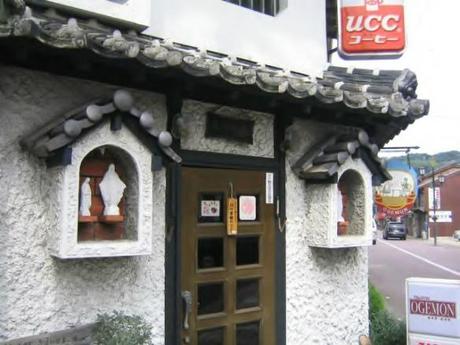
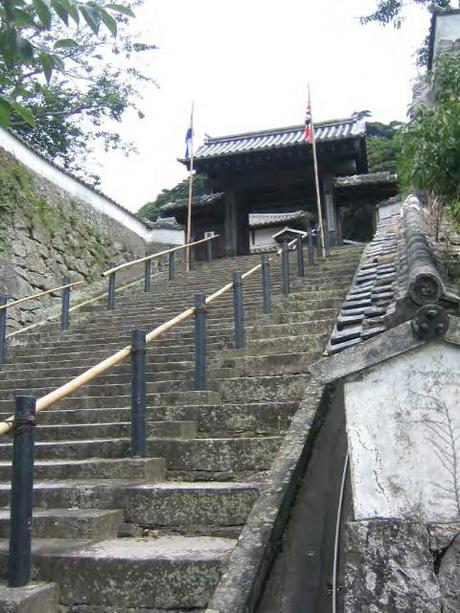
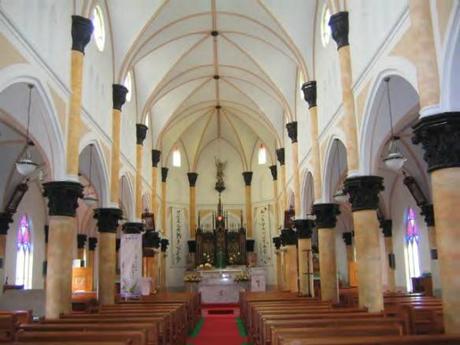
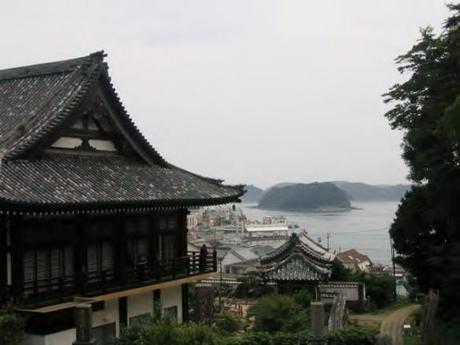
Hirado has been a port of call for ships between the Asian mainland and Japan since the Nara period.
During the Kamakura and Muromachi periods, the local Matsuura clan held the rights to trade with Korea and with Sung Dynasty China.
During the Sengoku and early Edo periods, Hirado’s role as a center of foreign trade increased, especially vis-a-vis Ming Dynasty China and the Dutch East India Company (VOC). The Portuguese arrived in 1550, and the English and Dutch initially reached Japan at the beginning of the 17th century.
The first step in the profitable Dutch-Japanese trading relationship was the Shogun’s grant of a trading pass (handelspas) in 1609.
At its maximum extent, the Dutch trading center covered the whole area of present-day Sakikata Park.In 1637 and in 1639, stone warehouses were constructed, and the Dutch builders incorporated these dates into the stonework. However, the Tokugawa shogunate disapproved of the use of any Christian Era year dates, and therefore demanded the immediate destruction of these two structures.This failure to comply with strict sakoku practices was then used as one of the Shogunate’s rationales for forcing the Dutch traders to abandon Hirado for the more constricting confines of Dejima, a small artificial island in the present-day city of Nagasaki.The last VOC Opperhoofd or Kapitan at Hirado and the first one at Dejima was Francois Caron, who oversaw the transfer in 1641.However, modern research indicated that this incident might actually have been an excuse for the Shogunate to take the Dutch trade away from the Hirado clan.The stone warehouse from 1639 that was torn down has been reconstructed in its original form in 2011.
During the Edo period, Hirado was the seat of the Hirado Domain. Hirado Castle is today an historical and architectural landmark.
The island was the namesake of IJN cruiser Hirado.
Komyo-ji Temple and Zuiun-ji Temple are mostly famous as part of the view of both temples and a church. This view of the spire and cross of the Hirado Catholic Church in combination with the traditionally Japanese tiled roofs of the two temples has become representative of Hirado as it shows the mixture of Japanese and Western cultures.
Hirado-City, Nagasaki-Prefecture, Kyusyu-Region, Japan
Around 2003
Please excuse law quality images with low-performance Compact Digital Cameras.
古くから平戸は,対外交流・交易において重大な役割を果たしてきた土地でした。
鎌倉時代,1191年には,仏教僧・栄西が留学先の南宋から平戸島に帰着し,平戸滞在中に島内の冨春庵(現在の千光寺の場所)において日本で初めて禅宗を伝え、また庵裏山にこれも日本で初めて茶畑を作りました。
室町時代,1550年には,松浦隆信が南蛮貿易に進出し、平戸港にポルトガルの貿易船が初めて入港しました。同年9月にはフランシスコ・ザビエルが平戸に来航し、キリスト教(カトリック)の布教を始めました。
しかし1561年には,宮ノ前事件(ポルトガル人と日本人との間で暴動が起きる)が発生し、翌年からポルトガル船の貿易港が大村藩領の横瀬浦(現・西海市西海町横瀬)に替わりました。
安土桃山時代には,イスパニアの貿易船が入港し,1600年には,後に天下をとる徳川家康が松浦鎮信に6万3千石の領地を安堵し,平戸藩が確立しました。
江戸時代初期には,オランダが商館,イギリスが商館が設置されましたが,
しかしその後,江戸幕府は平戸の商館を長崎へ移す政策を打ち出し,イギリス商館,オランダ商館が相次いで平戸の商館を閉鎖し,平戸の南蛮貿易は終焉を迎えました。
これらの歴史のなかで,平戸にはいくつものキリスト教会が建立され,仏教寺院と調和した風景を醸し出しています。
長崎県平戸市,2003年頃。
当時の低パフォーマンスコンパクトデジタルカメラによる撮影の為,低画質ご容赦下さい。

